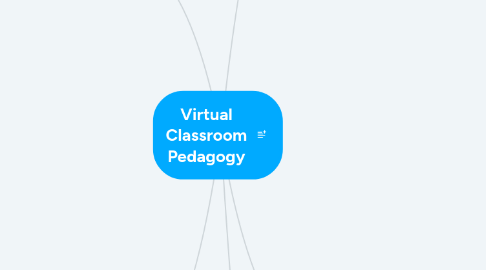
1. Illusion of Explanatory Depth (Group 7-8)
1.1. Definition
1.1.1. Thinking you are able to explain something more thoroughly than actually able (don't know what you don't know)
1.2. Examples
1.2.1. Asking students to teach a concept
1.2.2. Relative aortic stenosis in pregnant women
1.3. Why is it important to recognize?
1.4. ways to avoid
1.4.1. check facts
1.4.2. eliminate bias
1.4.3. explain basic concepts
2. Constructivism (Group 9-10)
2.1. Definition
2.1.1. building on prior experiences
2.1.2. scaffolding
2.1.3. learning is an active process
2.1.4. actively constructing knowledge with regard to related concepts/schema
2.2. Examples
2.2.1. problem-based learning
2.2.2. sim activities increasing in complexity over a yearlong curriculum
2.2.3. activation question at the start of a session - getting the learners thinking based on prior activities
2.2.4. M&M
2.2.5. relating core concepts to everyday examples
2.2.6. formulating a differential by organ system
2.2.7. Create content by learner
2.2.8. quality improvement cycles
2.2.9. categories of hyperkalemia medications grouped by mechanism
2.3. Classroom - Based
3. Time and Attention (Group 1-2)
3.1. Definition
3.1.1. Time to peak attention
3.1.2. Time allocation per topics/activities
3.1.3. Time to maximal attention
3.1.4. Testing time
3.2. Examples
3.2.1. Attention
3.2.1.1. distractions on the computer
3.2.1.2. 6-9 minutes for attention span
3.2.1.3. Attention time as a function of number of learners
3.2.2. Time
3.2.2.1. YouTube video watching drops off after 2:30 minutes
3.2.2.2. 8 seconds of the goldfish
3.2.3. Design
3.2.3.1. podcasts of around 20 min.
3.2.3.2. Timing interactive pieces (HIIT)
3.2.3.3. add pauses after 10-15 minutes
3.2.3.4. Poor Design of CBT/interactive CBT
3.2.4. Tools
3.2.4.1. PowToon
3.2.4.2. Branching Logic
3.2.4.2.1. H5P
3.2.4.2.2. YoScenario
3.2.4.2.3. Twine
3.2.4.2.4. Quandary
3.2.4.3. TedEd
3.2.4.4. Twitter
4. Dual Channel Theory (Group 3-4)
4.1. Definition
4.1.1. audiovisual channels use to learn
4.1.1.1. challenging the definition of 2 channels
4.1.2. adding the experience in virtual worlds (3D)
4.1.2.1. Dual channels -there are two separate channels (auditory and visual)
4.2. Examples
4.2.1. graphic medicine
4.2.2. 3D movies
4.2.3. videos
4.2.4. narrated powerpoints
4.2.5. images and words together
4.2.6. immersive sim
4.2.7. Powtoon
4.2.8. loom
5. Cognitive Load (Group 5-6)
5.1. Definition
5.1.1. Overburdened by too much information and how it is processed into functional knowledge
5.1.2. Amount of working memory being utilized
5.2. Examples
5.2.1. Intrinsic
5.2.1.1. volume of information as part of learning
5.2.1.2. good teaching practices that maximize learning
5.2.1.3. distilling words into an image to mitigate cognitive load
5.2.1.4. student centered - creating a mind map is an example
5.2.1.5. contextualizing content for learners
5.2.2. Extraneous
5.2.2.1. outside factors affecting learning
5.2.2.1.1. too much tech
5.2.2.2. create learning objectives prior to course, coherence and continuity principles
5.2.2.3. good teaching practices to facilitate germaine learning
5.2.3. Germane
5.2.3.1. becomes the working memory
5.2.3.2. structured flow or construction for learning
5.2.3.3. example to improve - mindmapping, scaffolding, chunking, schema, signaling, headlines, jamboard
